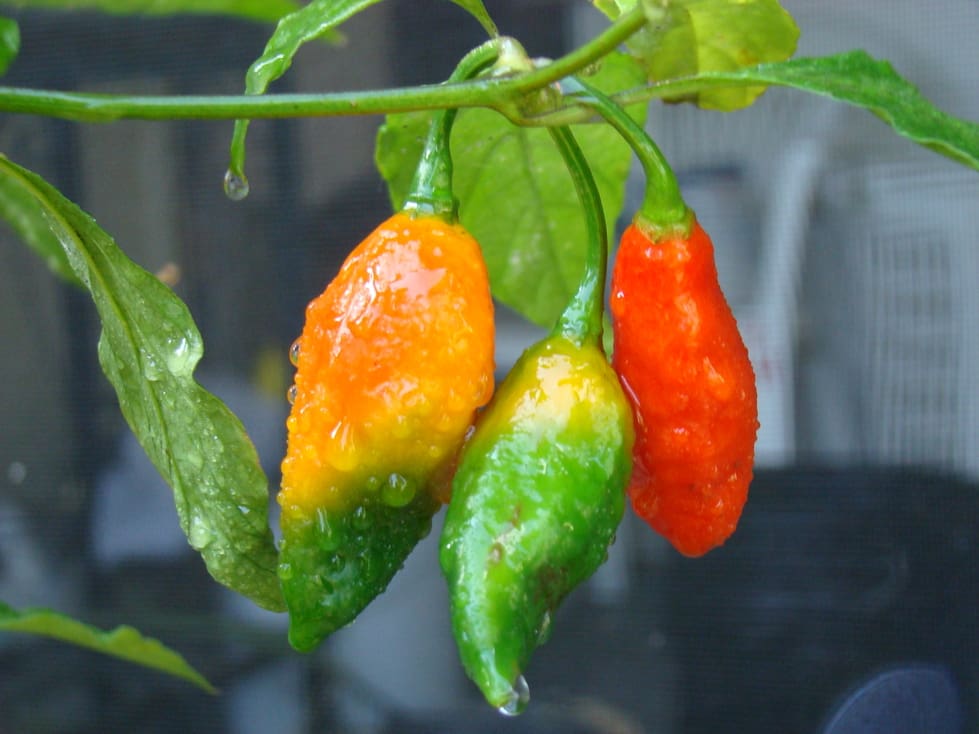Chile Expert Breaks Down How It’s Nearly Impossible To Describe The Taste Of One

Odd sensations and natural reactions to various thoughts, especially when it comes to food (mouthwatering), uprises in questionable, biological ways — that I definitely want to avoid getting into — enticing what would happen if you ate the food. For instance, chiles trigger that collection of saliva (sorry, too much info?) under my tongue, but what is actually happening when eating the chile is that it alarms heat sensors. The biological response to mouthwatering will remain unanswered (at least in this article), but eating chiles, and the heat experience coming along with it, is all broken down by an OG Chile Breeder.
Dr. Paul Bosland is the OG chile connoisseur with thirty-two years of breeding chiles— NuMex Heritage 6-4, Birdpepper, Aji Limon, and thirty other cultivars. In 1990, he co-founded New Mexico State University’s Chile Pepper Institute, where he serves as the director.
But at the start of his career, Bosland knew that chiles were still an ethnic food item—you know that half-aisle at the grocery store, those like four lower shelves where Goya and Kikkoman and grandmas from half the world converge. All to say, America loved its bland food and the widespread use of chile peppers was still pretty limited to Latino and Asian communities.

The common person can generally distinguish chiles on physical characteristics alone (think: green bell pepper vs. green jalapeño). And anyone can denote the one thing a pepper is known for: how spicy it is. But, the spiciness of a chile, or rather its heat profile, is much more complex. Here’s how a chile-master determines heat:
- When does the heat appear (rapid or delayed)?
The immediate arrival of the heat may be better than a delayed one. For instance, a habanero doesn’t hit you until the second bite. And, at that point, it only gets spicier.
- How long does the heat linger (for a few seconds, minutes, hours)?
Another way of asking this is: How much milk will I be chugging?” which is also an indication of the Scoville Heat Units (SHU) ranging from 0 SHU to 2,000,000 SHU.
- Where is the heat sensed? (Heat map your mouth).
What’s suffering more, your lips, mid-palate, back of your throat, or the tip of your tongue? Heat mapping these sensations and where they’re occuring is an integral sign further specializing the chile among the large variety of breeds.
- Is the heat sharp or flat?
A sharp heat is essentially tongue acupuncture, and a flat heat is a broad heat that feels like it’s being painted on.
- What is the level of the heat?
Mild, medium, hot… no need to explain more, right?
Tasting chiles, and determining its heat profile, is analogous to wine tasting where biting on a chile ignites specific tasting notes. For Dr. Bosland, he can sense whether it’s citrusy, sweet, or tangy. Yet, if posed with the frequently asked question, “What is a jalapeño flavor?” or “What makes a jalapeño taste like a jalapeño?” he and his fellow colleagues will leave it unanswered. This is because taste cannot be homogenous. The way we experience colors slightly differently, so is the case with taste. But this has created an interesting challenge for Bosland and his researchers. How can they create a homogenous pepper from such a wide variety of breeds and growing conditions?
“We were telling our growers, probably twenty years ago, ‘We’re losing the traditional green chile flavor.’ We didn’t know what that meant, or what that flavor is. So we went out and planted it and had farmers go in the field and taste the chiles, and tell us if they have a traditional flavor.”
Nu-Mex Heritage 6-4 was the new, yet traditional-tasting chile pepper resulting from this trial and error taste test.
Nomenclature and the taste of a chile can get lost as the versatility of chile changes so often in response to nature and from people’s varying palates.
A specific chile, New Mexico Number 9, is one of those green chiles where its name and flavor can get confused. The formal name, New Mexico Number 9 is often replaced by Hatch — a city where it was grown after it was freshly bred at New Mexico State University in the early 1900s.

New Mexico Number 9’s flavor has remained fairly consistent, and is popping up in many restaurants menus — even in Long Beach, California. Panxa Cocina, a Southwestern-inspired joint, is fully dedicating September to New Mexico No.9, proving how this pepper is becoming a buzz worthy ingredient in cooking when in season. At Panxa Cocina, Chef Art Gonzalez is integrating this chile with traditional, New Mexican dishes like enchiladas. However, he also leaves room for experimentation, like mixing it into their potato-cheddar pancake recipe. The consistency of its taste keeps it thriving in the market, yet it, too, is subject to change merely based on natural mutations in the breeding process — from one generation of chile’s to the next.
Dr. Paul Bosland has front-lined the research on chile breeds, and cracked open far-reaching discoveries on different ones altering the food scene entirely. Yet, the chemistry question of what makes a specific chile taste the way it is will remain unanswered… in this article, at least.
However, the continual breeding and chile tasting will introduce new chiles that may further the food scene and the taste buds of individuals.






















